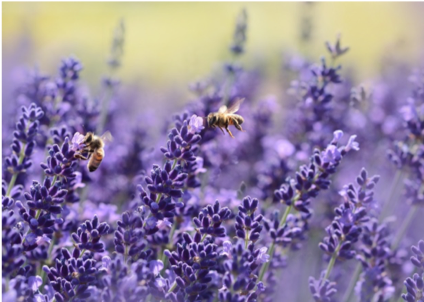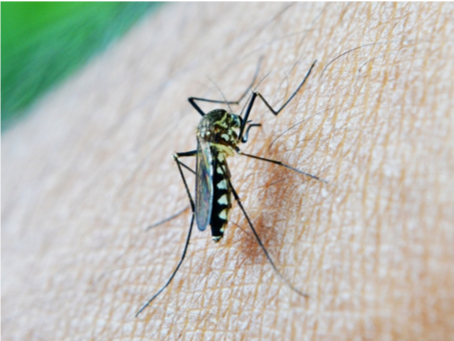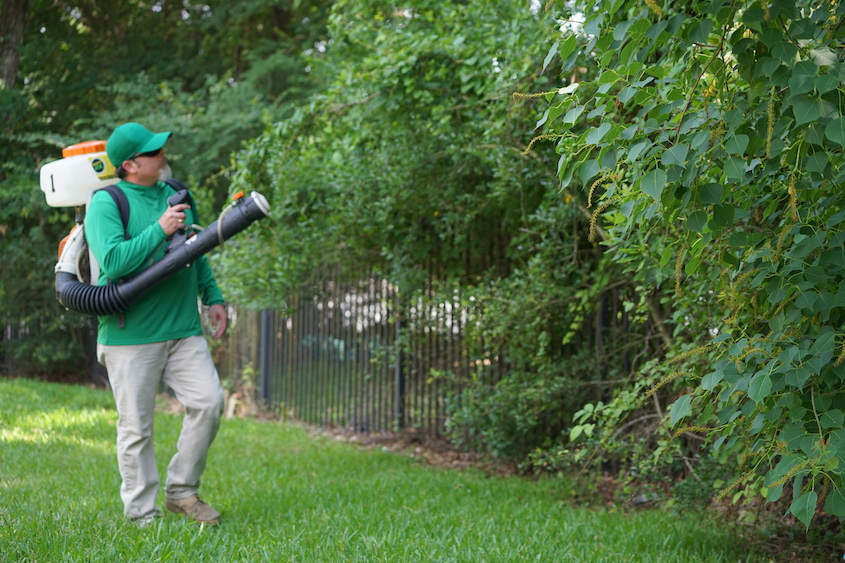What is Mosquito Spraying?
There can be a lot of confusion about the differences between mosquito spraying versus fogging, even misting systems versus spraying. We thought it might be a good idea to run through the process of our barrier service and all it entails.
A mosquito spraying service is essentially composed of three different steps:


Step #1 – Standing Water
The first of these is dealing with your water. Water is your number one source for mosquitoes. They lay their eggs in it, or on moist areas that have a tendency to hold water after rain. This can include ground areas heavy in pine needles and leaves, where the ground never sees daylight and thus the soil is moist and dark. Mosquito eggs can actually survive for ten years dry, and hatch when a water hits them. The more water we remove or treat on your property the better off you will be. So the first thing our technicians do when they arrive at a property is to walk around and locate all those water sources. It only takes one teaspoon or so to make a home for a new batch of mosquitoes, so we treat any water – from French drains to gutters, that we can’t remove, and dump any water we can – such as plant pot saucers or patio cushions (and yes, we have found mosquito larvae in patio cushions before!).


Step #2 – Protecting Pollinators
Once the water is dealt with our technicians turn their attention to your flowering plants, fruit trees and vegetable gardens. We are very conscious of the pollinators in a yard and want to minimize any impact to them. In order to do this, we treat the base of these areas with a natural garlic. This garlic is unpleasant to mosquitoes and will push them to other spots where we can kill them while minimizing the impact to the pollinators.
Step #3 – Eliminating Mosquitoes
The last step of a service is to treat all the foliage in your yard, as well as any fencing you may have. When we do this, we coat both the top and the underside of the leaves. Mosquitoes hate the sun and actually feed off plant nectar. It’s just the girls that bite when they have bred (they need the blood meal to provide them the needed protein to lay eggs) so typically mosquitoes are found under these leaves feeding.


The barrier service works because mosquitoes are bad fliers. So bad, in fact, that they shrub hop for the most part. When the mosquitoes hop into your yard and onto your shrubs (or fence), they will land on our product and die. Of course, we occasionally get a call from someone who has acres of prairie land and we have to recommend a misting system for them. A barrier service relies on foliage to create a barrier, and when a yard has no barrier foliage a misting system might be the better option.
Mosquitoes are fascinating creatures. The first mosquito fossil dates back to 46 million years ago. They are also the most dangerous animal in the world, transmitting a number of deadly diseases such as Malaria, Zika, Chikungunia and West Nile. The breeding cycle of a mosquito is jaw-dropping. In one bottle cap, a female mosquito will lay about 300 eggs every 3-5 days. Of these, 150 or so will be female. The math can get pretty complicated as the numbers get so high, but within 15 days or so that one mosquito can produce over 500 million female offspring under the right conditions. When you look at the numbers this way it’s perhaps a little easier to understand why they are so deadly.
Want to continue this conversation? Give us a call at 281-815-0228 or email nwhoustonbrazos@mosquitojoe.com.



